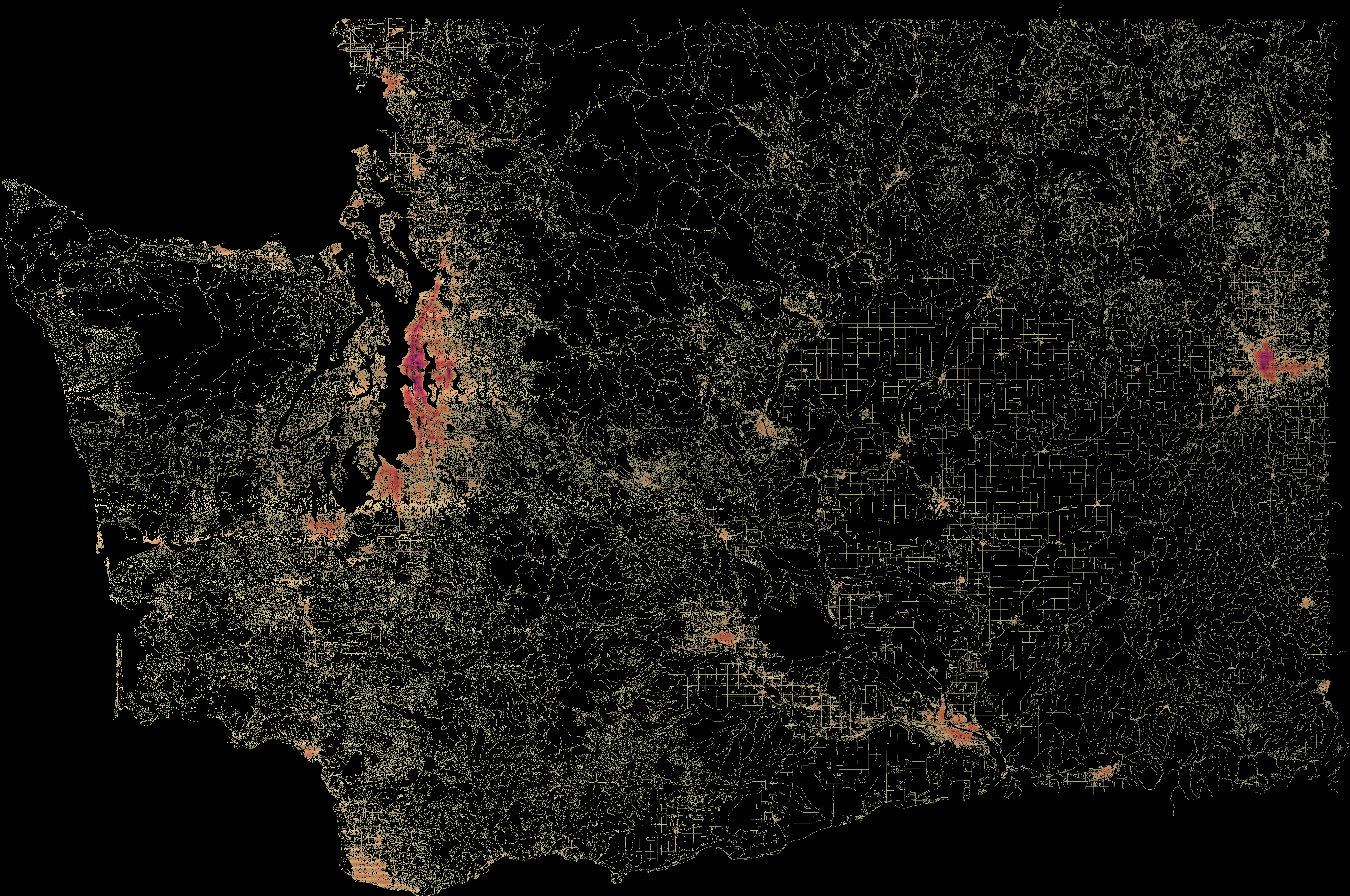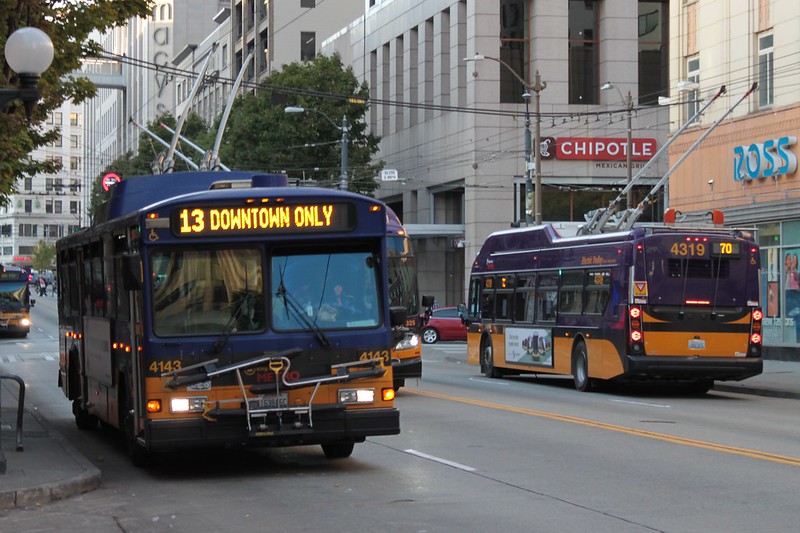Arf is a new tool for generating unweighted access analyses, like the ones seen in this blog. Its outputs have the same 80 meter spatial resolution as those generated with my previous access analysis tool, the BusGraphs Access Analyzer, but arf can assess areas of sizes on the order of US states, and runs on conventional personal computers rather than cloud computing infrastructure. This 30-minute transit and walking access map of Washington state took around 70 minutes to generate on a 2020 M1 MacBook Air laptop.

Relative amount of thirty-minute transit and walking access throughout Washington state. Map data from OpenStreetMap.




